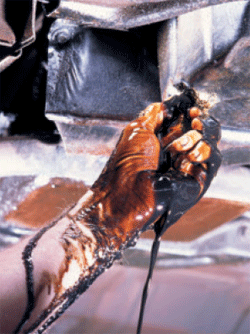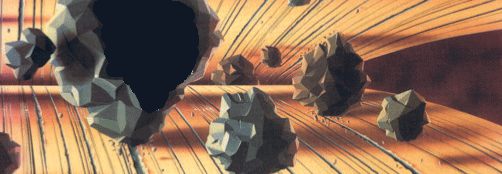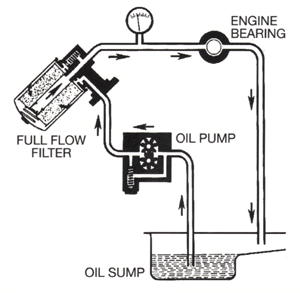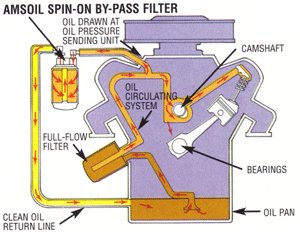Water
Combustion produces water vapour, or steam. When engine temperatures increase most of the water turns into vapour form and goes out through the exhaust. However, when engine temperatures are low, such as; at start-up, warm-up and short-trip operation in low ambient temperatures, the water vapour condenses (turns into a liquid) on cylinder walls collects in the crankcase oil. This contamination if not removed (periodic oil changes) leads to the formation of sludge, rust and corrosion.
Acids
The combustion process produces acidic gases which, like water vapour, condense on cylinder walls at cold engine temperatures and also find their way into the crankcase oil. These acids combine with water to cause rust and corrosion. When water condensation in a diesel engine combines with its acid by-products produce what is known as sulphuric acid.
Soot and Carbon
Incomplete combustion produces soot, carbon and other deposit-forming materials. An engine running too “rich,” or with too much fuel, increases the amount of contaminants. In gasoline engines, light-load and low-speed operations increase these combustion by-products more than high-load, high-speed operations. Diesel engines produce more of these by-products with low-speed, high-load operations.
Fuel Dilution
When an engine is started or running abnormally, some unburned fuel in liquid form is deposited on cylinder walls. That means raw fuel leaks past the rings into the crankcase, where it reduces the viscosity of the oil. Dilution lowers the film strength of the oil and increases oil consumption. Usually this is a minor problem when engine operation is at high-speed or high-temperatures, but it can be a problem in vehicles consistently used for short-trip driving, (typical city driving).
While all of the processes by which motor oil is contaminated are not fully defined, the use of high-quality motor oils such as AMSOIL synthetic motor oils allows operators continued protection of their engines along with extended drain intervals, all while limiting the contaminants in the oil and prolonging engine life.





